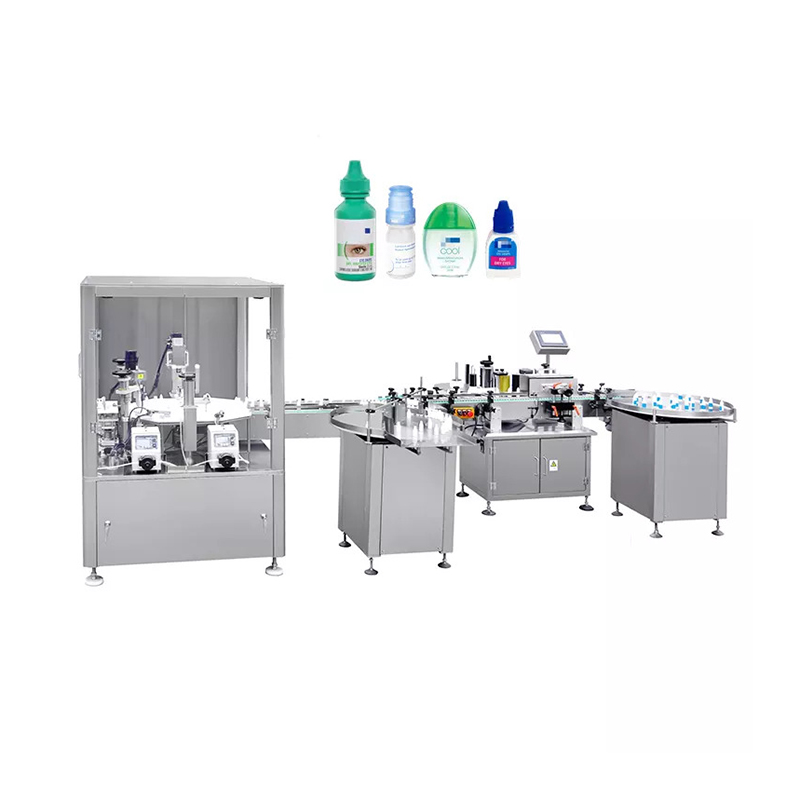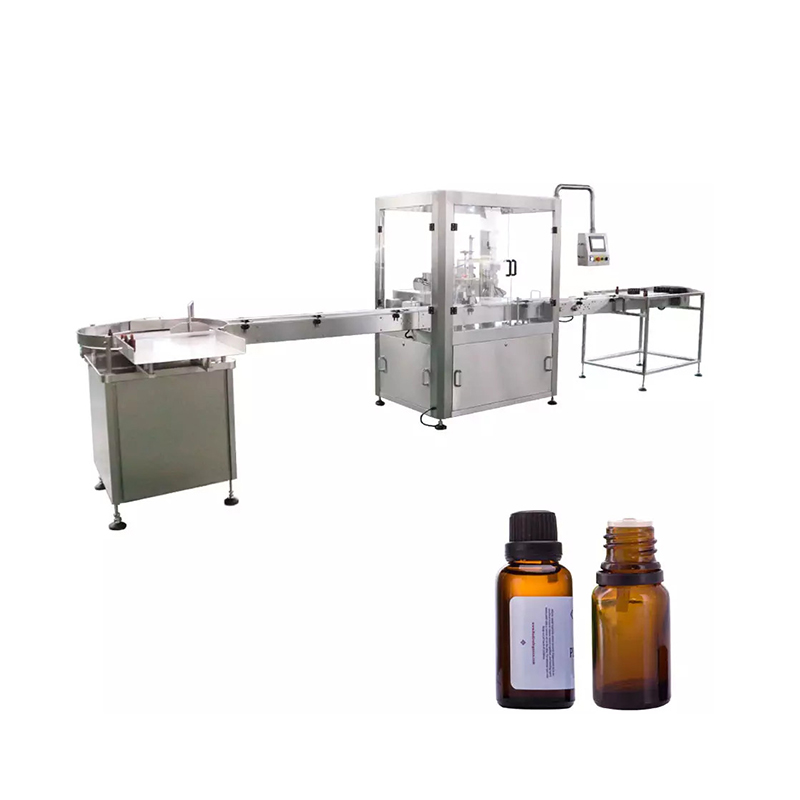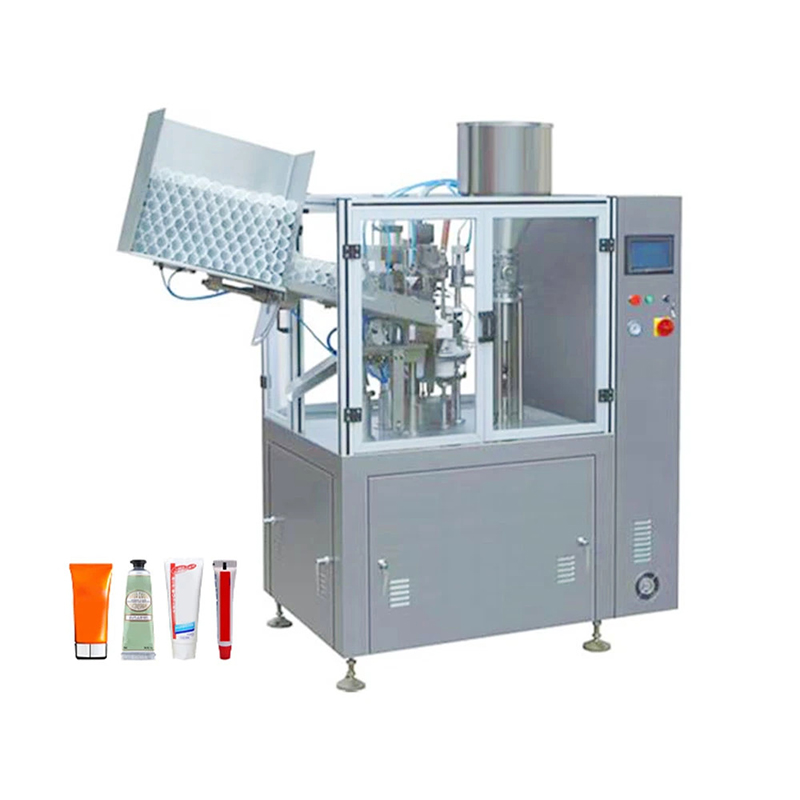What is a pharmaceutical filling machine and how does it work?
A pharmaceutical filling machine is a machine that is used to fill and package liquid or solid medications in containers such as vials, bottles, or capsules. These machines are used in the pharmaceutical industry to accurately and efficiently package medication for distribution and sale.
There are several different types of pharmaceutical filling machines, including volumetric filling machines, which dispense a specific volume of medication using a piston or other measuring device; gravimetric filling machines, which use weight to measure and dispense medication; and flow-based filling machines, which use a flow sensor to measure and dispense medication.
The operation of a pharmaceutical filling machine typically involves several steps:
Preparation: The containers to be filled are prepared and placed in a designated area on the machine.
Filling: The medication is dispensed into the containers using a piston, weight, or flow sensor.
Closing: The containers are sealed or closed after filling.
Labeling: The containers are labeled with information such as the medication name, dosage, and expiration date.
Packaging: The filled and labeled containers are then placed into a larger container or packaging for distribution.
Pharmaceutical filling machines are highly automated and are designed to operate with a high degree of accuracy and precision to ensure that the correct dosage of medication is dispensed and that the medication is properly packaged and labeled.
What are the different types of pharmaceutical filling machines?
There are several different types of pharmaceutical filling machines, each designed to handle a specific type of medication or container. Some of the most common types of pharmaceutical filling machines include:
Volumetric filling machines:
These machines dispense a specific volume of medication using a piston or other measuring device. They are commonly used for liquids and other flowable medications.
Gravimetric filling machines:
These machines use weight to measure and dispense medication. They are commonly used for powders, granules, and other non-flowable medications.
Flow-based filling machines:
These machines use a flow sensor to measure and dispense medication. They are commonly used for liquids and other flowable medications.
Auger filling machines:
These machines use a rotating auger or screw to measure and dispense medication. They are commonly used for powders, granules, and other non-flowable medications.
Liquid filling machines:
These machines are specifically designed to fill liquid medications into containers such as bottles or vials.
Capsule filling machines:
These machines are specifically designed to fill solid medications into capsules.
Syringe filling machines:
These machines are specifically designed to fill liquid medications into syringes.
Each type of pharmaceutical filling machine has its own unique features and capabilities, and the best machine for a particular application will depend on the type and volume of medication being packaged, as well as the size and shape of the containers being used.
What are the benefits of using a pharmaceutical filling machine?
There are several benefits to using a pharmaceutical filling machine, including:
Accuracy:
Pharmaceutical filling machines are highly accurate and can dispense precise dosages of medication, ensuring that patients receive the correct amount of medication.
Efficiency:
Pharmaceutical filling machines can fill and package medication quickly and efficiently, increasing production rates and reducing the overall time required to package medication.
Consistency:
Pharmaceutical filling machines can fill and package medication consistently, ensuring that each batch of medication is of the same quality and potency.
Cost-effectiveness:
Pharmaceutical filling machines can reduce the cost of medication production by increasing the speed and efficiency of the filling and packaging process.
Safety:
Pharmaceutical filling machines can help to reduce the risk of medication errors and ensure that medications are properly labeled and packaged, improving patient safety.
Overall, the use of pharmaceutical filling machines can help to improve the quality and accuracy of medication production, increase efficiency and productivity, and reduce costs, making them an important tool in the pharmaceutical industry.
What are the key factors to consider when selecting a pharmaceutical filling machine?
There are several key factors to consider when selecting a pharmaceutical filling machine, including:
Type of medication:
Different types of pharmaceutical filling machines are better suited to different types of medication. For example, liquid filling machines are suitable for liquids and flowable medications, while capsule filling machines are suitable for solid medications.
Container size and shape:
The size and shape of the containers that the medication will be filled into should be considered when selecting a filling machine. The machine should be able to handle the containers being used and should be able to fill and package the medication accurately and efficiently.
Production volume:
The production volume, or the number of containers that need to be filled and packaged per unit of time, should be considered when selecting a filling machine. The machine should be able to keep up with the required production rate.
Accuracy:
The accuracy of the filling machine is important to ensure that patients receive the correct dosage of medication. The machine should be able to dispense precise dosages of medication consistently.
Ease of use and maintenance:
The ease of use and maintenance of the filling machine should be considered, as this can affect the efficiency and productivity of the filling and packaging process.
Cost:
The cost of the filling machine, including the initial purchase price and any ongoing maintenance or repair costs, should be considered when selecting a machine.
By considering these factors, you can select a pharmaceutical filling machine that is well-suited to your specific needs and requirements.
How is the accuracy of a pharmaceutical filling machine ensured?
The accuracy of a pharmaceutical filling machine is ensured through a combination of design features and quality control measures.
In terms of design, many pharmaceutical filling machines use highly accurate measuring devices such as pistons, flow sensors, or weighing scales to dispense the correct dosage of medication. These devices are designed to be precise and consistent in order to ensure the accuracy of the filling process.
In addition to the design of the filling machine, quality control measures are also important to ensure accuracy. These may include regular calibration of the measuring devices, checks on the filling process to ensure that the correct dosage is being dispensed, and the use of quality control checks and procedures to ensure the overall accuracy of the filling process.
Overall, the accuracy of a pharmaceutical filling machine is critical to ensure that patients receive the correct dosage of medication and that the medication is safe and effective. By combining accurate design features with quality control measures, pharmaceutical companies can ensure the accuracy of their filling machines and the quality of their medications.
What are the safety considerations when using a pharmaceutical filling machine?
There are several safety considerations to keep in mind when using a pharmaceutical filling machine:
Personal protective equipment (PPE):
It is important to wear appropriate PPE when operating or working near a pharmaceutical filling machine. This may include gloves, goggles, and a lab coat to protect against accidental spills or splashes of medication.
Training:
It is important that operators of pharmaceutical filling machines are properly trained on the safe use and operation of the machine. This may include training on emergency shutdown procedures, as well as general safety procedures.
Machine maintenance:
Regular maintenance of the filling machine is important to ensure that it is operating safely and correctly. This may include checking and replacing worn or damaged parts, as well as ensuring that the machine is kept clean and free of debris.
Medication handling:
It is important to handle medications safely when filling and packaging them. This may include following proper handling procedures to prevent contamination, as well as taking steps to prevent spills or accidents.
Overall, it is important to take a proactive approach to safety when working with pharmaceutical filling machines. By following safety procedures and guidelines, operators can minimize the risk of accidents or injuries and ensure the safe operation of the filling machine.
How are pharmaceutical filling machines cleaned and maintained?
Pharmaceutical filling machines are typically cleaned and maintained on a regular basis to ensure that they are operating safely and efficiently.
The specific cleaning and maintenance procedures will depend on the type of filling machine being used and the specific requirements of the medication being packaged. However, some general steps that may be involved in the cleaning and maintenance of a pharmaceutical filling machine include:
Disassembling the machine:
The machine may need to be disassembled in order to clean certain parts or components. This may include removing the filling mechanism, conveyors, and other parts of the machine.
Cleaning:
The machine and its parts should be thoroughly cleaned using appropriate cleaning agents and procedures. This may include the use of detergents, disinfectants, or other cleaning products.
Inspection:
The machine and its parts should be inspected for wear or damage and any necessary repairs or replacements should be made.
Calibration:
The measuring devices on the filling machine, such as pistons or weighing scales, may need to be calibrated on a regular basis to ensure accuracy.
Testing:
The machine should be tested after cleaning and maintenance to ensure that it is operating properly.
Overall, the cleaning and maintenance of a pharmaceutical filling machine is important to ensure that it is operating safely and efficiently. By following a regular cleaning and maintenance schedule, operators can extend the life of the machine and ensure the quality and accuracy of the medication being produced.
What are the different features and options available in pharmaceutical filling machines?
There are many different features and options available in pharmaceutical filling machines, depending on the specific type and model of the machine. Some common features and options that may be available include:
Measuring devices:
Different types of filling machines use different types of measuring devices to dispense medication, such as pistons, flow sensors, weighing scales, or augers.
Container handling:
Some filling machines are designed to handle specific types or sizes of containers, such as bottles, vials, or capsules. Others may have the ability to handle a range of container sizes or types.
Filling speed:
The speed at which the filling machine can dispense medication can vary depending on the model and the specific application. Some filling machines are designed for high-volume production, while others are better suited for low-volume production.
Material handling:
Some filling machines are designed to handle specific types of materials, such as liquids, powders, or granules.
Automatic or manual operation:
Some filling machines are fully automated and require minimal operator intervention, while others may be operated manually or semi-automatically.
Packaging options:
Some filling machines have the ability to package the filled containers in a variety of ways, such as placing them in a larger container or packaging them in a blister pack.
Customization:
Some filling machines can be customized to meet specific needs or requirements, such as the ability to handle different container sizes or types or the ability to dispense different dosages of medication.
Overall, the specific features and options available in a pharmaceutical filling machine will depend on the specific type and model of the machine, as well as the specific needs and requirements of the application.
How can the efficiency of a pharmaceutical filling machine be increased?
There are several ways in which the efficiency of a pharmaceutical filling machine can be increased:
Proper maintenance:
Regular maintenance of the filling machine, including cleaning and inspections, can help to ensure that the machine is operating at its optimal level of efficiency.
Proper training:
Ensuring that operators of the filling machine are properly trained on its use and operation can help to increase efficiency by reducing the risk of errors or mistakes.
Use of automation:
Automating certain tasks, such as labeling and packaging, can help to increase the overall efficiency of the filling process.
Streamlining the filling process:
Reviewing and optimizing the filling process can help to identify and eliminate bottlenecks or inefficiencies. This may involve making changes to the machine itself or to the way in which the machine is operated.
Use of advanced technology:
The use of advanced technology, such as sensors or machine learning algorithms, can help to improve the efficiency of the filling process by enabling the machine to adapt to changing conditions or to optimize its performance.
By implementing these measures, it is possible to increase the efficiency of a pharmaceutical filling machine and improve the overall productivity of the filling and packaging process.
How is the production capacity of a pharmaceutical filling machine determined?
The production capacity of a pharmaceutical filling machine is typically determined by the number of containers it can fill and package per unit of time, such as the number of bottles per hour or the number of capsules per minute. This capacity can vary depending on the specific type and model of the filling machine, as well as the specific requirements of the application.
There are several factors that can affect the production capacity of a pharmaceutical filling machine, including:
The type and volume of medication being dispensed:
Some medications may be more difficult to dispense or may require more time to fill, which can impact the overall production capacity of the filling machine.
The size and shape of the containers being used:
The size and shape of the containers being filled can affect the speed at which the machine can dispense medication. For example, filling small vials may be faster than filling large bottles.
The efficiency of the filling process:
The efficiency of the filling process can be affected by factors such as the accuracy and consistency of the filling machine, as well as the efficiency of the labeling and packaging process.
The automation level of the filling machine:
Fully automated filling machines may be able to operate at a higher production capacity than manual or semi-automatic machines.
Overall, the production capacity of a pharmaceutical filling machine will depend on a variety of factors and can be affected by changes in these factors. It is important to carefully consider the production capacity requirements of a particular application when selecting a filling machine.
What are the regulatory requirements for pharmaceutical filling machines?
There are several regulatory requirements that apply to pharmaceutical filling machines to ensure the safety and quality of the medications being produced. These requirements may vary depending on the location and specific regulatory agency involved, but some common requirements include:
Good manufacturing practices (GMP):
GMP guidelines outline the minimum standards that should be followed in the production of medications to ensure their safety and effectiveness. These guidelines may include requirements for the design, operation, and maintenance of pharmaceutical filling machines.
Quality control measures:
Quality control measures, such as testing and inspections, should be in place to ensure the accuracy and consistency of the filling process.
Documentation:
Detailed documentation of the filling process, including production and maintenance records, may be required to demonstrate compliance with regulatory requirements.
Validation:
The filling machine and the filling process may need to be validated to ensure that they are operating correctly and producing medications of the required quality.
Overall, regulatory requirements for pharmaceutical filling machines are in place to ensure the safety and effectiveness of the medications being produced. It is important for manufacturers to be aware of and comply with these requirements in order to ensure the quality and integrity of their products.
What are the latest trends and innovations in pharmaceutical filling machine technology?
There are several trends and innovations in pharmaceutical filling machine technology that are currently emerging:
Automation:
The use of automation is increasing in the pharmaceutical industry, with filling machines that are fully or partially automated becoming more common. This can help to improve the efficiency and accuracy of the filling process.
Advanced technology:
The use of advanced technology, such as machine learning algorithms and sensors, is becoming more prevalent in pharmaceutical filling machines. These technologies can help to optimize the filling process and improve efficiency.
Customization:
There is a trend towards customization in the pharmaceutical filling machine industry, with manufacturers offering filling machines that can be tailored to the specific needs and requirements of a particular application.
Flexibility:
Filling machines that are able to handle a range of container sizes and types, as well as different types of medication, are becoming more popular as manufacturers look for ways to increase flexibility and adaptability.
Quality control:
There is a focus on improving the accuracy and consistency of the filling process through the use of advanced quality control measures, such as real-time monitoring and automatic adjustments to the filling process.
Overall, the trend in pharmaceutical filling machine technology is towards increased automation, advanced technology, customization, flexibility, and quality control, as manufacturers look for ways to improve the efficiency and accuracy of the filling process.



